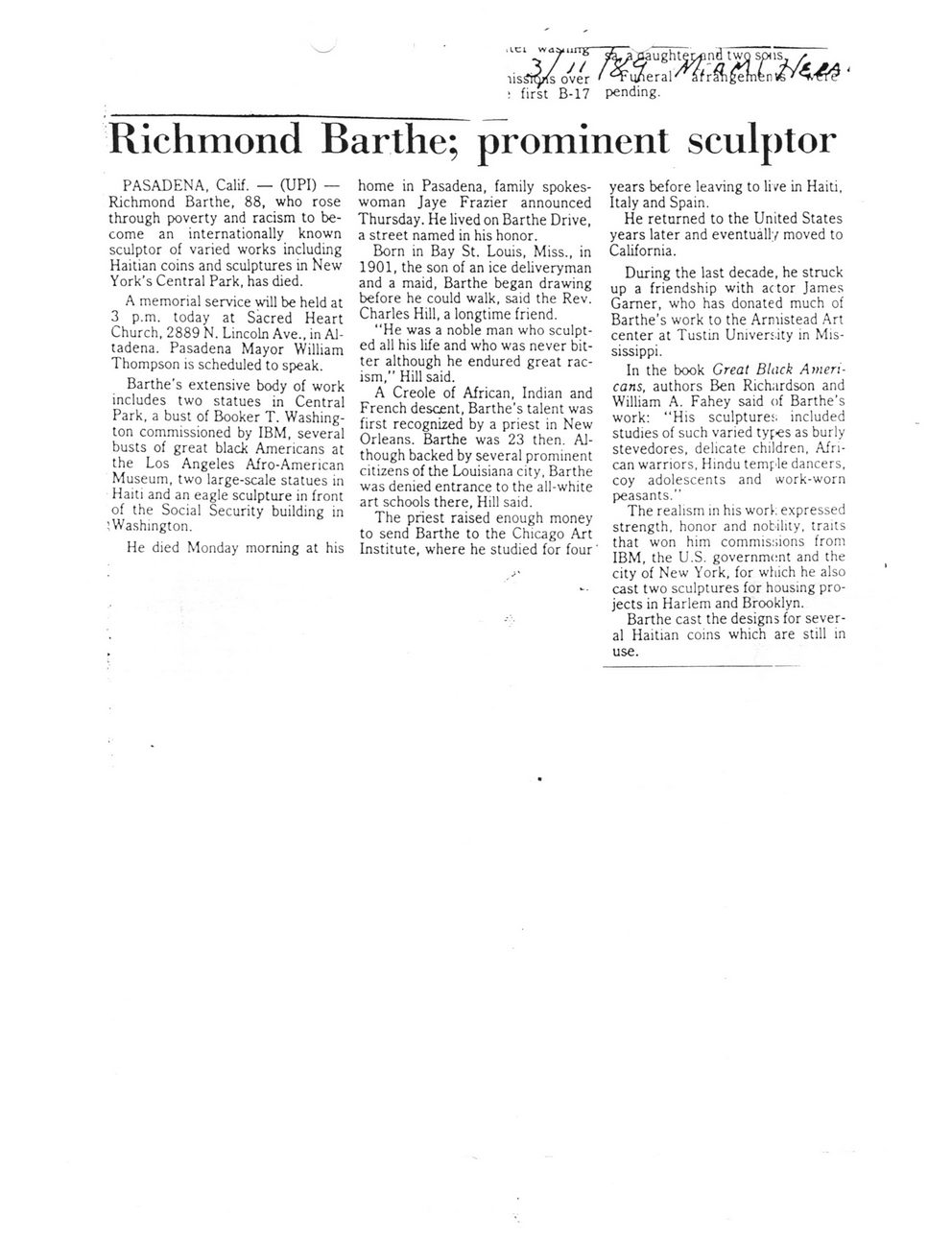This text was obtained via automated optical character recognition.
It has not been edited and may therefore contain several errors.
iV.ci wa^iiiTg" usSrGKs over : first B-17 Vaught^ eral' pending. iter^md two spus, / Richmond Barthe; prominent sculptor PASADENA, Calif. ? (UPI) ? Richmond Barthe, 88, who rose through poverty and racism to become an internationally known sculptor of varied works including Haitian coins and sculptures in New York?s Central Park, has died. A memorial service will be held at 3 p.m. today at Sacred Heart Church, 2889 N. Lincoln Ave., in Al-tadena. Pasadena Mayor William Thompson is scheduled to speak. Barthe?s extensive body of work includes two statues in Central Park, a bust of Booker T. Washington commissioned by IBM, several busts of great black Americans at the Los Angeles Afro-American Museum, two large-scale statues in Haiti and an eagle sculpture in front of the Social Security building in ! Washington. He died Monday morning at his home in Pasadena, family spokeswoman Jaye Frazier announced Thursday. He lived on Barthe Drive, a street named in his honor. Born in Bay St. Louis, Miss., in 1901, the son of an ice deliveryman and a maid, Barthe began drawing before he could walk, said the Rev. Charles Hill, a longtime friend. ?He was a noble man who sculpted all his life and who was never bitter although he endured great racism,? Hill said. A Creole of African, Indian and French descent, Barthe?s talent was first recognized by a priest in New Orleans. Barthe was 23 then. Although backed by several prominent citizens of the Louisiana city, Barthe was denied entrance to the all-white art schools there. Hill said. The priest raised enough money to send Barthe to the Chicago Art Institute, where he studied for four' years before leaving to live in Haiti, Italy and Spain. He returned to the United States years later and eventually moved to California. During the last decade, he struck up a friendship with actor James Garner, who has donated much of Barthe's work to the Armistead Art center at Tustin University in Mississippi. In the book Great Black Americans, authors Ben Richardson and William A. Fahey said of Barthe?s work: ?His sculpture:, included studies of such varied typ-es as burly stevedores, delicate children, African warriors, Hindu temple dancers, coy adolescents and work-worn peasants.? The realism in his work expressed strength, honor and nobility, traits that won him commissions from IBM, the U.S. government and the city of New York, for which he also cast two sculptures for housing projects in Harlem and Brooklyn. Barthe cast the designs for several Haitian coins which are still in use.

Barthe, Richmond Miami-Herald-obit-3-11-89